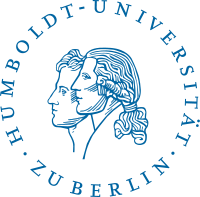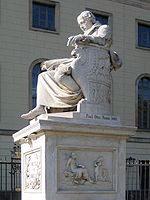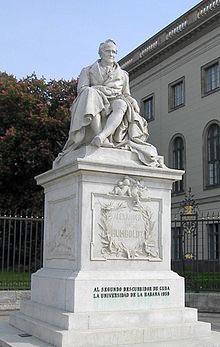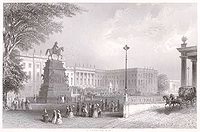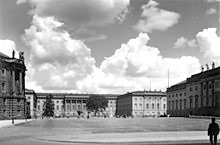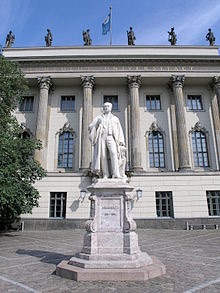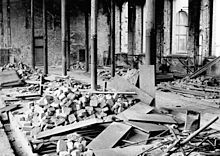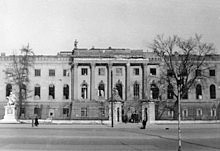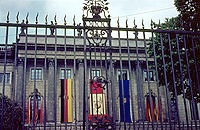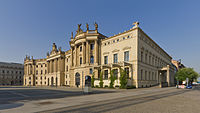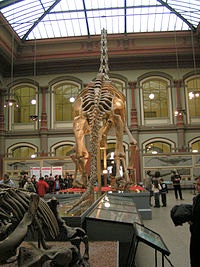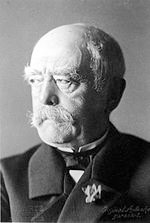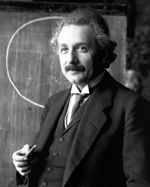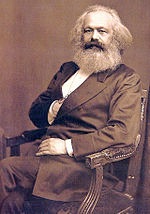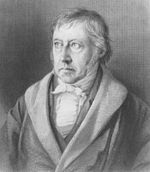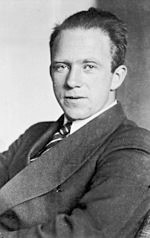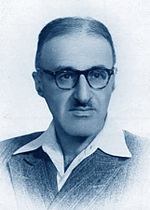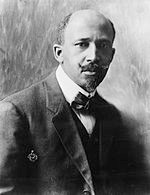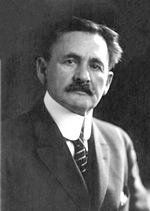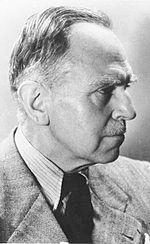Berlin, Germany
Humboldt University of Berlin


From Wikipedia, the free encyclopedia
.
Humboldt University of Berlin
Humboldt-Universität zu Berlin
Seal of the Universitas Humboldtiana Berolinensis (Latin)
Motto
Universitas litterarum (Latin)
Motto in English
The Entity of Sciences
Established
1810
Type
Budget
424 million (excl. Charité)[1]
Marina Frost
Jan-Hendrik Olbertz
Academic staff
2,441[2]
Admin. staff
3,330[2]
Students
33,540[1]
19,942[3]
10,857[3]
2,951[3]
Location
Unter den Linden, Berlin, Germany
Campus
29[4]
blue and white
HU Berlin
Affiliations
German Universities Excellence Initiative
Website
The Humboldt University of Berlin (German: Humboldt-Universität zu Berlin) is one of Berlin's oldest universities, founded in 1810 as the University of Berlin (Universität zu Berlin) by the liberal Prussian educational reformer and linguist Wilhelm von Humboldt, whose university model has strongly influenced other European and Western universities. From 1828 it was known as the Frederick William University (Friedrich-Wilhelms-Universität), and later (unofficially) also as the Universität unter den Linden after its location. In 1949, it changed its name to Humboldt-Universität in honour of both its founder Wilhelm and his brother, geographer Alexander von Humboldt. In 2012, the Humboldt University of Berlin was one of eleven German top-universities (also known as elite universities) to win in the German Universities Excellence Initiative, a national competition for universities organized by the German Federal Government. The university has educated 29 nobel prize winners and is considered one of the most prestigious universities in Europe.[5]
History
Monument to Wilhelm von Humboldt in front of the main building. Artist: Paul Otto
Statue of Alexander von Humboldt outside Humboldt University, from 1883 by artist Reinhold Begas. Note the Spanish inscription describing him as "the second discoverer of Cuba".
The first semester at the newly founded Berlin university occurred in 1810 with 256 students and 52 lecturers in faculties of law, medicine, theology and philosophy under rector Theodor Schmalz. The university has been home to many of Germany's greatest thinkers of the past two centuries, among them the subjective idealist philosopher Johann Gottlieb Fichte, the theologian Friedrich Schleiermacher, the absolute idealist philosopher G.W.F. Hegel, the Romantic legal theorist Friedrich Carl von Savigny, the pessimist philosopher Arthur Schopenhauer, the objective idealist philosopher Friedrich Schelling, cultural critic Walter Benjamin, and famous physicists Albert Einstein and Max Planck. Founders of Marxist theory Karl Marx and Friedrich Engels attended the university, as did poet Heinrich Heine, novelist Alfred Döblin, founder of structuralism Ferdinand de Saussure, German unifier Otto von Bismarck, Communist Party of Germany founder Karl Liebknecht, African American Pan Africanist W. E. B. Du Bois and European unifier Robert Schuman, as well as the influential surgeon Johann Friedrich Dieffenbach in the early half of the 1800s. The university is home to 29 Nobel Prize winners.
The structure of German research-intensive universities, such as Humboldt, served as a model for institutions like Johns Hopkins University. Further, it has been claimed that "the 'Humboldtian' university became a model for the rest of Europe [...] with its central principle being the union of teaching and research in the work of the individual scholar or scientist."[6]
Enlargement
The Berlin University in 1850.
In addition to the strong anchoring of traditional subjects, such as science, law, philosophy, history, theology and medicine, Berlin University developed to encompass numerous new scientific disciplines. Alexander von Humboldt, brother of the founder William, promoted the new learning. With the construction of modern research facilities in the second half of the 19th Century teaching of the natural sciences began. Famous researchers, such as the chemist August Wilhelm Hofmann, the physicist Hermann von Helmholtz, the mathematicians Ernst Eduard Kummer, Leopold Kronecker, Karl Weierstrass, the physicians Johannes Peter Müller, Albrecht von Graefe, Rudolf Virchow and Robert Koch, contributed to Berlin University's scientific fame.
During this period of enlargement, Berlin University gradually expanded to incorporate other previously separate colleges in Berlin. An example would be the Charité, the Pépinière and the Collegium Medico-chirurgicum. In 1717, King Friedrich I had built a quarantine house for Plague at the city gates, which in 1727 was rechristened by the "soldier king" Friedrich Wilhelm:[disambiguation needed] "Es soll das Haus die Charité heißen" (It will be called Charité [French for charity]). By 1829 the site became Berlin University's medical campus and remained so until 1927 when the more modern University Hospital was constructed.
Berlin University started a natural history collection in 1810, which, by 1889 required a separate building and became the Museum für Naturkunde. The preexisting Tierarznei School, founded in 1790 and absorbed by the university, in 1934 formed the basis of the Veterinary Medicine Facility (Grundstock der Veterinärmedizinischen Fakultät). Also the Landwirtschaftliche Hochschule Berlin (Agricultural University of Berlin), founded in 1881 was affiliated with the Agricultural Faculties of the University.
Third Reich
The University in 1938.
After 1933, like all German universities, it was affected by the Nazi regime. The rector during this period was Eugen Fischer. It was from the university's library that some 20,000 books by "degenerates" and opponents of the regime were taken to be burned on May 10 of that year in the Opernplatz (now the Bebelplatz) for a demonstration protected by the SA that also featured a speech by Joseph Goebbels. A monument to this can now be found in the center of the square, consisting of a glass panel opening onto an underground white room with empty shelf space for 20,000 volumes and a plaque, bearing an epigraph from an 1820 work by Heinrich Heine: "Das war ein Vorspiel nur, dort wo man Bücher verbrennt, verbrennt man am Ende auch Menschen" ("That was only a prelude; where they burn books, they ultimately burn people").
The Law for the Restoration of the Professional Civil Service (German "Gesetz zur Wiederherstellung des Berufsbeamtentums") resulted in 250 Jewish professors and employees being fired during 1933/1934 and numerous doctorates being withdrawn. Students and scholars and political opponents of Nazis were ejected from the university and often deported. During this time nearly one third of all of the staff were fired by the Nazis.
The main building of Humboldt University, located in Berlin's "Mitte" district (Unter den Linden boulevard).
Reopening
Bombed out room in the University Chemistry Institute (Chemisches Institut der Universität), 1950
The Soviet Military Administration in Germany (SMAD) ordered (Befehl-Nr. 4) the opening of the university in January 1946. The SMAD wanted a redesigned Berlin University based on the Soviet model, however they insisted on the phrasing "newly opened" and not "re-opened" for political reasons. The president of the German Central Administration for National Education (DZVV), Paul Wandel, in his address at the January 29, 1946, opening ceremony, said: "I spoke of the opening, and not of the re-opening of the university. [...] The University of Berlin must effectively start again in almost every way. You have before you this image of the old university. What remains of that is nought but ruins." The teaching was limited to seven departments working in reopened, war-damaged buildings, with many of the teachers dead or missing. However, by the winter semester of 1946, the Economic and Educational Sciences Faculty had re-opened.
The Workers and Peasants Faculty (German: Arbeiter-und-Bauern-Fakultät) (ABF), an education program aimed at young men who, due to political or racial reasons, had been disadvantaged under the Nazis, was established at the university during this time. This program existed at Berlin University until 1962.
Splitting of the university
Berlin University, 1950.
The East-West conflict in post-war Germany led to a growing communist influence in the university. This was controversial, and incited strong protests within the student body and faculty. Soviet NKVD secret police arrested a number of students in March 1947 as a response. The Soviet Military Tribunal in Berlin-Lichtenberg ruled the students were involved in the formation of a "resistance movement at the University of Berlin", as well as espionage, and were sentenced to 25 years of forced labor. From 1945 to 1948, 18 other students and teachers were arrested or abducted, many gone for weeks, and some taken to the Soviet Union and executed.[ In the spring of 1948, after several university students with admission irregularities were withdrawn, the opposition demanded a "free" university. Students and scholars, with support from especially the Americans, the newspaper Der Tagesspiegel, and the governing Mayor Ernst Reuter founded the Free University of Berlin in Dahlem (part of the American sector). The decades-long division of the city into East and West Berlin finally cemented the division into two independent universities permanently.
East Germany
Humboldt University in 1964.
Since the old name of the university had some monarchic origins the university was renamed. Although the Soviets and the government of East-Berlin preferred a naming after some communistic leader the university was in the end named after the two Humboldt brothers.[7] Independent research and teaching was not longer possible instead the academic staff was replaced by communists to get the education system in line with the ruling ideology. Nevertheless, it was still possible in some areas to restore international contacts and create world-wide cooperation. The long-standing and intensive research and exchange links with the universities in Eastern Europe and particularly in the former Soviet Union are worth special mentioning; many of these links are without parallel in Germany. In addition, formal academic cooperation with nearly all universities in the capital cities of Western Europe has existed since the 1970s. And for several years there have been close relations to universities in Japan and the United States, as well as in Asian, African and Latin American countries.[8] Until the collapse of the East German regime in 1989, Humboldt University remained under tight ideological control of the Sozialistische Einheitspartei Deutschlands (Socialist Unity Party of Germany), or SED, which, by rigorously selecting students according to their conformity to the party line, made sure that no democratic opposition could grow on its university campuses. Its communist-selected students and scholars did not participate to any significant degree in the East German democratic civil rights movements of 1989, and elected the controversial SED member and former Stasi spy Heinrich Fink as the Rector of the university as late as 1990.
The Royal Library, now seat of the Faculty of Law.
The Humboldt Museum, the largest museum of natural history in Germany.
Today
After the unification of East and West Germany, the university was radically restructured and all professors had to reapply for their positions. The faculty was largely replaced with West German professors, among them the historian Heinrich August Winkler. Today, Humboldt University is a state university with a large number of students (37,145 in 2003, among them more than 4,662 foreign students) after the model of West German universities, and like its counterpart the Free University of Berlin.
The university consists of three different campuses namely Campus Mitte, Campus Nord and Campus Adlershof. Its main building is located in the centre of Berlin at the boulevard Unter den Linden and is the heart of Campus Mitte. The building was erected on order by King Frederick II for his younger brother Prince Henry of Prussia. All the institutes of humanities are located around the main building together with the Department of Law and the Department of Business and Economics. Campus Nord is located north of the main building close to Berlin Hauptbahnhof and is the home of the life science departments including the university medical center Charité. The natural science together with computer science and mathematics are located at Campus Adlershof in the south-east of Berlin. Furthermore, the university continues its tradition of a book sale at the university gates facing Bebelplatz.
Library
When the Royal Library proved insufficient, a new library was founded in 1831, first located in several temporary sites. In 1871–1874 a library building was constructed, following the design of architect Paul Emanuel Spieker. In 1910 the collection was relocated to the building of the Berlin State Library.
During the Weimar Period the library contained 831,934 volumes (1930) and was thus one of the leading university libraries in Germany at that time.
During the Nazi book burnings in 1933, no volumes from the university library were destroyed. Also, the loss through World War II was comparatively small. In 2003, natural science related books were outhoused to the newly founded library at the Adlershof campus, which is dedicated solely to the natural sciences.
Since the premises of the State Library had to be cleared in 2005, a new library building is about to be erected close to the main building in the center of Berlin. The "Jacob und Wilhelm Grimm-Zentrum" opened in 2009.
In total, the university library contains about 6.5 million volumes and 9000 held magazines and journals and is one of the biggest university libraries in Germany.
The books of the Institut für Sexualwissenschaft were destroyed during the Nazi book burnings and the institute destroyed. Under the terms of the Magnus Hirschfeld Foundation, the government had undertaken to continue the work of the institute at the university after its founder's death. However these terms were ignored. In 2001 however the university acquired the Archive for Sexology from the Robert Koch Institute, which was founded on a large private library donated by Prof. Haeberle. This has now been housed at the new Magnus Hirschfeld Center.[9]
Notable alumni, professors and lecturers
-
•Theodore Dyke Acland (1851–1931), surgeon and physician
-
•Alexander Altmann (1906–1987), rabbi and scholar of Jewish philosophy and mysticism
-
•Gerhard Anschütz (born 1948) leading jurisprudent and "father of the constitution" of the Bundesland Hesse
-
•Michelle Bachelet (born 1951), pediatrician and epidemiologist, president of the Republic of Chile
-
•Azmi Bishara (born 1956), Arab-Israeli politician
-
•Bruno Bauer (1809–1882), theologian, Bible critic and philosopher
-
•Jurek Becker (1937–1997), writer (Jacob the Liar)
-
•Eliezer Berkovits (1908–1992), rabbi, philosopher and theologian
-
•Otto von Bismarck (1815–1898), first German chancellor
-
•Dietrich Bonhoeffer (1906–1945), theologian and resistance fighter
-
•Max Born (1882–1970), physicist, Nobel Prize for physics in 1954
-
•Gottlieb Burckhardt (1836–1907), psychiatrist, first physician to perform modern psychosurgery (1888)
-
•Michael C. Burda, macroeconomist
-
•George C. Butte (1877–1940), American jurist
-
•Stepan Shahumyan (1878–1918), communist politician and head of the Baku Commune
-
•Ezriel Carlebach (1909–1956), Israeli journalist and editorial writer
-
•Ernst Cassirer (1874–1945), philosopher
-
•Adelbert von Chamisso (1781–1838), natural scientist and writer
-
•Angela Davis (born 1944), political activist, educator, author, philosopher
-
•Zakir Hussain (1897–1969), third president of India
-
•Wilhelm Dilthey (1833–1911), philosopher
-
•W. E. B. Du Bois (1868–1963), African-American activist and scholar
-
•Paul Ehrlich (1854–1915), physician, Nobel Prize for medicine in 1908
-
•Albert Einstein (1879–1955), physicist, Nobel Prize for physics in 1921
-
•Friedrich Engels (1820–1895), journalist and philosopher
-
•Ludwig Andreas Feuerbach (1804–1872), philosopher
-
•Johann Gottlieb Fichte (1762–1814), philosopher, rector of the university (1810–1812)
-
•Hermann Emil Fischer (1852–1919), founder of modern biochemistry, Nobel Prize in chemistry in 1902
-
•Werner Forßmann (1904–1979), physician, Nobel Prize for medicine in 1956
-
•James Franck (1882–1964), physicist, Nobel Prize for physics in 1925
-
•Ernst Gehrcke (1878–1960), experimental physicist
-
•Jacob Grimm (1785–1863), linguist and literary critic
-
•Wilhelm Grimm (1786–1859), linguist and literary critic
-
•Fritz Haber (1868–1934), chemist, Nobel Prize for chemistry in 1918
-
•Otto Hahn (1879–1968), chemist, Nobel Prize for chemistry in 1944
-
•Sir William Reginald Halliday (1886–1966), principal of King's College London (1928–1952)
-
•Robert Havemann (1910–1982), chemist, co-founder of European Union, and leading GDR dissident
-
•Georg Wilhelm Friedrich Hegel (1770–1831), philosopher
-
•Heinrich Heine (1797–1856), writer and poet
-
•Werner Heisenberg (1901–1976), physicist, Nobel Prize for physics in 1932
-
•Hermann von Helmholtz (1821–1894), physician and physicist
-
•Gustav Hertz (1887–1975), physicist, Nobel Prize for physics in 1925
-
•Heinrich Hertz (1857–1894), physicist
-
•Abraham Joshua Heschel (1907–1972) rabbi, philosopher, and theologian
-
•Jacobus Henricus van 't Hoff (1852–1911), chemist, Nobel Prize for chemistry in 1901
-
•Max Huber (1874–1960), international lawyer and diplomat
-
•Christoph Wilhelm Hufeland (1762–1836), founder of macrobiotics
-
•Wilhelm von Humboldt (1767–1835), politician, linguist, and founder of the university
-
•Alexander von Humboldt (1769–1859), natural scientist
-
•Sadi Irmak (1904–1990), Prime minister of Turkey
-
•Hermann Kasack (1896–1966), writer
-
•George F. Kennan (1904–2005), American diplomat, political scientist and historian
-
•Gustav Kirchhoff (1824–1887), physicist
-
•Robert Koch (1843–1910), physician, Nobel Prize for medicine in 1905
-
•Komitas (1869-1935), Armenian musician
-
•Albrecht Kossel (1853–1927), physician, Nobel Prize for medicine in 1910
-
•Arnold Kutzinski (died 1956), psychiatrist
-
•Arnold von Lasaulx (1839–1886) mineralogist and petrographer
-
•Max von Laue (1879–1960), physicist, Nobel Prize for physics in 1914
-
•Yeshayahu Leibowitz (1903–1994), Israeli public intellectual and polymath
-
•Wassily Leontief (1905–1999), economist, Nobel Prize for economics in 1973
-
•Karl Liebknecht (1871–1919), socialist politician and revolutionary
-
•Friedrich Loeffler (1852–1915), bacteriologist
-
•Herbert Marcuse (1898–1979), philosopher
-
•Karl Marx (1818–1883), philosopher
-
•Ernst Mayr (1904–2005), biologist
-
•Lise Meitner (1878–1968), physicist, Enrico Fermi Award in 1966
-
•Felix Mendelssohn Bartholdy (1809–1847), composer
-
•Theodor Mommsen (1817–1903), historian, Nobel Prize for literature in 1902
-
•Edmund Montgomery (1835–1911), philosopher, scientist, physician
-
•John von Neumann (1903–1957), mathematician and physicist
-
•Max Planck (1858–1947), physicist, Nobel Prize for physics in 1918
-
•Leopold von Ranke (1795–1886), historian
-
•Erich Regener (1881-1955), physicist
-
•Robert Remak (1815–1865), cell biologist
-
•Friedrich Wilhelm Joseph von Schelling (1775–1854), philosopher
-
•Friedrich Daniel Ernst Schleiermacher (1768–1834), philosopher
-
•Bernhard Schlink (born 1944), writer, Der Vorleser (The Reader)
-
•Carl Schmitt (1888–1985), German jurist, political theorist, and professor of law.
-
•Menachem Mendel Schneerson (1902–1994), rabbi, philosopher, and theologian
-
•Arthur Schopenhauer (1788–1860), philosopher
-
•Erwin Schrödinger (1887–1961), physicist, Nobel Prize for physics in 1933
-
•Peter Schubert (1938–2003), diplomat and albanologist
-
•Georg Simmel (1858–1918), philosopher and sociologist
-
•Joseph B. Soloveitchik (1903–1993), rabbi, philosopher, and theologian
-
•Herman Smith-Johannsen (1875–1987), sportsman who introduced cross-country skiing to North America
-
•Werner Sombart (1863–1941), philosopher, sociologist and economist
-
•Hans Spemann (1869–1941), biologist, Nobel Prize for biology in 1935
-
•Hermann Stieve (1886–1952), anatomist who did research on bodies of Nazi execution victims
-
•Max Stirner (1806–1856), philosopher
-
•Yemima Tchernovitz-Avidar (1909–98), Israeli author
-
•Gustav Tornier (1859–1938), paleontologist and zoologist
-
•Kurt Tucholsky (1890–1935), writer and journalist
-
•Rudolf Virchow (1821–1902), physician and politician
-
•Alfred Wegener (1880–1930), scientist, geologist, and meteorologist, early theorist of continental drift
-
•Karl Weierstraß (1815–1897), mathematician
-
•Max Westenhöfer (1871–1957), pathologist, proposed the Aquatic ape hypothesis, reformer of field of pathology in Chile
-
•Wilhelm Heinrich Westphal (1882–1978), physicist
-
•Wilhelm Wien (1864–1928), physicist, Nobel Prize for physics in 1911
-
•Ulrich von Wilamowitz-Moellendorff (1848–1931), philologist
-
•Richard Willstätter (1872–1942), chemist, Nobel Prize for chemistry in 1915
-
•Komitas Vardapet (1869–1935), Armenian priest, composer, choir leader, singer, music ethnologist, music pedagogue and musicologist
-
•Ian Battenberg (born 1990), Anglo-German member of the Battenberg family, a morganatic branch of the House of Hesse-Darmstadt, former rulers of the Grand Duchy of Hesse
-
•Karl Adolf Lorenz (1837–1923), composer
-
•Ram Manohar Lohia (1910-1967), Indian activist and politician
-
•Gregor Gysi (1966-1970), German politician and lawyer
There are 40 Nobel Prize winners affiliated to the Humboldt University, namely:
-
•1901 Jacobus Henricus van 't Hoff (Chemistry)
-
•1901 Emil Adolf von Behring (Physiology or Medicine)
-
•1902 Hermann Emil Fischer (Chemistry)
-
•1902 Theodor Mommsen (Literature)
-
•1905 Adolf von Baeyer (Chemistry)
-
•1905 Robert Koch (Physiology or Medicine)
-
•1907 Albert Abraham Michelson (Physics)
-
•1907 Eduard Buchner (Chemistry)
-
•1908 Paul Ehrlich (Physiology or Medicine)
-
•1909 Karl Ferdinand Braun (Physics)
-
•1910 Otto Wallach (Chemistry)
-
•1910 Albrecht Kossel (Physiology or Medicine)
-
•1910 Paul Heyse (Literature)
-
•1911 Wilhelm Wien (Physics)
-
•1914 Max von Laue (Physics)
-
•1915 Richard Willstätter (Chemistry)
-
•1918 Fritz Haber (Chemistry)
-
•1918 Max Planck (Physics)
-
•1920 Walther Nernst (Chemistry)
-
•1921 Albert Einstein (Physics)
-
•1925 Gustav Ludwig Hertz (Physics)
-
•1925 James Franck (Physics)
-
•1925 Richard Adolf Zsigmondy (Chemistry)
-
•1928 Adolf Otto Reinhold Windaus (Chemistry)
-
•1929 Hans von Euler-Chelpin (Chemistry)
-
•1931 Otto Heinrich Warburg (Physiology or Medicine)
-
•1932 Werner Heisenberg (Physics)
-
•1933 Erwin Schrödinger (Physics)
-
•1935 Hans Spemann (Physiology or Medicine)
-
•1936 Peter Debye (Chemistry)
-
•1939 Adolf Butenandt (Chemistry)
-
•1944 Otto Hahn (Chemistry)
-
•1950 Kurt Alder (Chemistry)
-
•1950 Otto Diels (Chemistry)
-
•1953 Fritz Albert Lipmann (Physiology or Medicine)
-
•1953 Hans Adolf Krebs (Physiology or Medicine)
-
•1954 Max Born (Physics)
-
•1956 Walther Bothe (Physics)
-
•1991 Bert Sakmann (Physiology or Medicine)
-
•2007 Gerhard Ertl (Chemistry)
Rankings
In 2013 QS World University Rankings[10] ranked Humboldt University 126th overall in the world, and 7th in Germany. Its subject rankings were: 22nd in Arts & Humanities, 184th in Engineering & IT, 123rd in Life Sciences & Biomedicine, 87th in Natural Sciences, and 90th in Social Sciences.
The Times Higher Education World University Ranking 2013–14 listed Humboldt-University as the 94th best university in the world and 6th best in Germany.[11]



